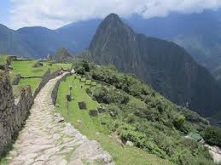The Machu Picchu quarry trail involving the classic Inca Trail has become famous for trekking in recent years, with multiple route options for both challenging and easier treks. Read our guide for more facts and information…
Over the years, pilgrims and visitors have discovered that approaching the mystical Machu Picchu on feet is not only exciting but also creates a sense of satisfaction and accomplishment. In order to prevent damages to the standard Inca Trail, the Peruvian government has limited the trail access to 500 persons a day, including porters. Permits for the standard Inca trail are sold out several months in advance. However, there are several alternative trail routes to Machu Picchu, thanks to the Incas, who were master road builders. The hikes can also be varied to meet the fitness levels of participants.
The Inca route
The Inca route begins at the Sacred Valley of the Incas, traverses the Cachicata Inca quarries and reaches Machu Picchu. The four-day route sets off at the trailhead in the Raphcca village. Hiking up through a lush side valley of farmhouses and terraced cultivations, visitors can glance at Andean birds amidst native trees and plants. Stopping at the mountain stream, they can choose between a low-altitude route that avoids steep climbs and sharp descents, and a challenging route that involves a steep trail and a tall waterfall. Climbing further, the path passes through open meadows and treeless grasslands, gently winding around mountain spurs to reach the pass of Chancachucu. This spot offers incredible panoramas of all the snow peaks in the area. The picturesque path goes through glaciers of Veronica and the route continues through plateaus to a camp site at Quenacancha.
Alternative trail routes
The steeper challenging route follows the broken ruins of a water channel that once supplied to the ancient quarries. The stream gushes through Punkuvoc, a steep ravine and reaches Quena woodlands. The trek involves zigzag trails, steep slopes and reaches the majestic gateway of Intipunku, a temple devoted to Veronica. The easier route diverts at the Quenacancha campsite and traverses grasslands located to the south of a rocky craig called Yana Orco above the Sacred Valley and Inca quarries. This spot gives spectacular views of Ollantaytambo and the valleys below. Winding along the edge of the valley and passing through the Quena woodland, the path approaches the Intipunku site.
The Inca quarries
The quarry trail leads to Choquetacarpo, a well-conserved Inca complex, which gives panoramic views of the mountain and valley. This site is considered to be the residential complex of architects, masons and dignitaries who were in charge of the Inca quarries and the Intipunku ceremonies. Moving downward, trekkers can see the various sections of the Inca quarries, including a natural rock fall showing huge carved chunks of pink rhyolite strewn around. The quarried stones are indicative of a massive building project, perhaps for an Inca temple atOllantaytambo, which never reached completion. A descent leads to the final camp site on the Inca terraces near the Cachicata village. From this spot, trekkers can go to Ollantaytambo and take the train or bus to reach Machu Picchu.
Trekkers usually tailor their trek to enter Machu Picchu at dawn through the famous Sun Gate, the impressive entranceway, to get their first glimpse of the mystical site. Trekking through the Machu Picchu quarry trail involving astonishing sceneries, ecological zones, dramatic panoramas and spiritual feelings is a lifetime dream for many.





